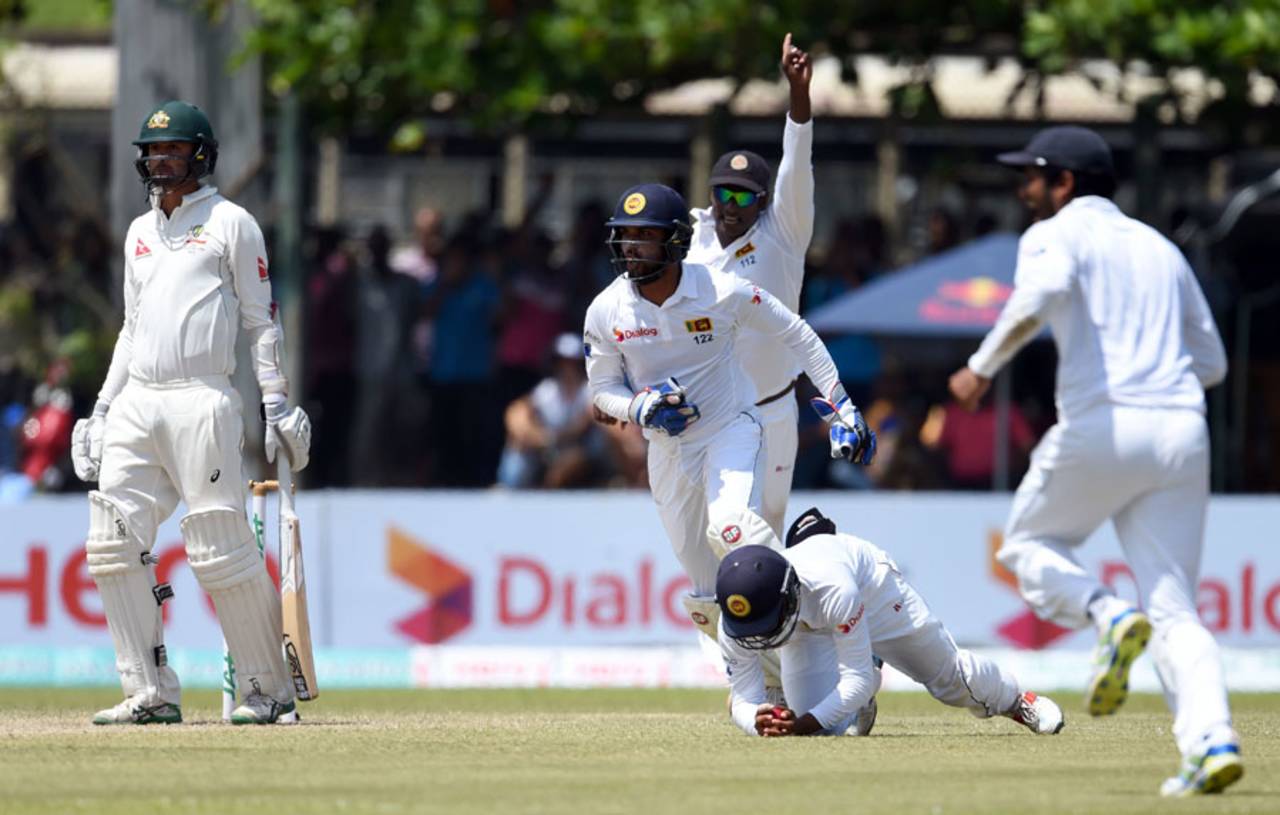Australia set to face spinning track in Colombo
Australia face another trial by spin in Colombo after the surface at the SSC was revealed to have been prepared along similar lines to the track in Galle
Daniel Brettig
11-Aug-2016

Australia will hope for a better batting performance on a likely turning track at the SSC, compared to their innings in Galle • AFP
Australia face another trial by spin in Colombo after the surface at the SSC was revealed to have been prepared along similar lines to the track in Galle.
Two days out from the third Test, the pitch showed even less signs of moisture or grass than Galle's had done, meaning it is again set to turn significantly from day one, with natural variation to again test the awareness of the visiting batsmen.
"If you look at the Galle wicket there was probably a little bit more grass on it at this stage," the touring vice-captain David Warner said after inspecting the wicket. "Going out there and looking at it, it is quite dry, but that's something that you do expect."
While it was never much of a secret that Sri Lanka intended to prepare spinning pitches for this series, the hosts appeared to flirt with earning censure for the surface in Galle, with the match referee Chris Broad reportedly seen in animated conversation with the ground staff on the subject of bare patches on a length at either end of the pitch.
Broad, who rated the Galle surface "poor" after the corresponding match between Sri Lanka and Australia in 2011, this time chose to offer a kinder final assessment of the pitch. Over three days it behaved less capriciously than the strip prepared five years ago, which in addition to sharp turn offered dangerous variable bounce.
ESPNcricinfo understands that while Sri Lanka did express a preference for a turning track in Galle, there was no specific direction given as to how this would be achieved. Ground staff were seen vigorously brushing the pitch in the lead-up to the match, a practice designed to reduce any residual grass coverage.
"Sometimes you get that in these conditions, they try and hold the wicket as well as they can together," Warner said of Galle's uneven grass coverage. "In that two-metre period from the crease it is going to get scuffed up on the first few days of a Test match.
"I think the Galle wicket was a competitive wicket, it was a little bit different to Kandy, I think day one and two, the Kandy wicket had a little bit of moisture in it, Galle naturally does turn a lot, I think the way that the pitch played was okay."
Penalties may be imposed by the ICC for pitches rated poor by the match referee, but otherwise home boards are left to manage their own surfaces. "The pitch wasn't marked as poor by the match referee so it is an issue for the home Board to manage," an ICC spokesperson said.
Pitches are rated somewhere on the following scale by match referees: very good, good, above average, below average, poor or unfit. Unless the pitch is rated poor, the ICC does not disclose the rating.
Daniel Brettig is an assistant editor at ESPNcricinfo. @danbrettig